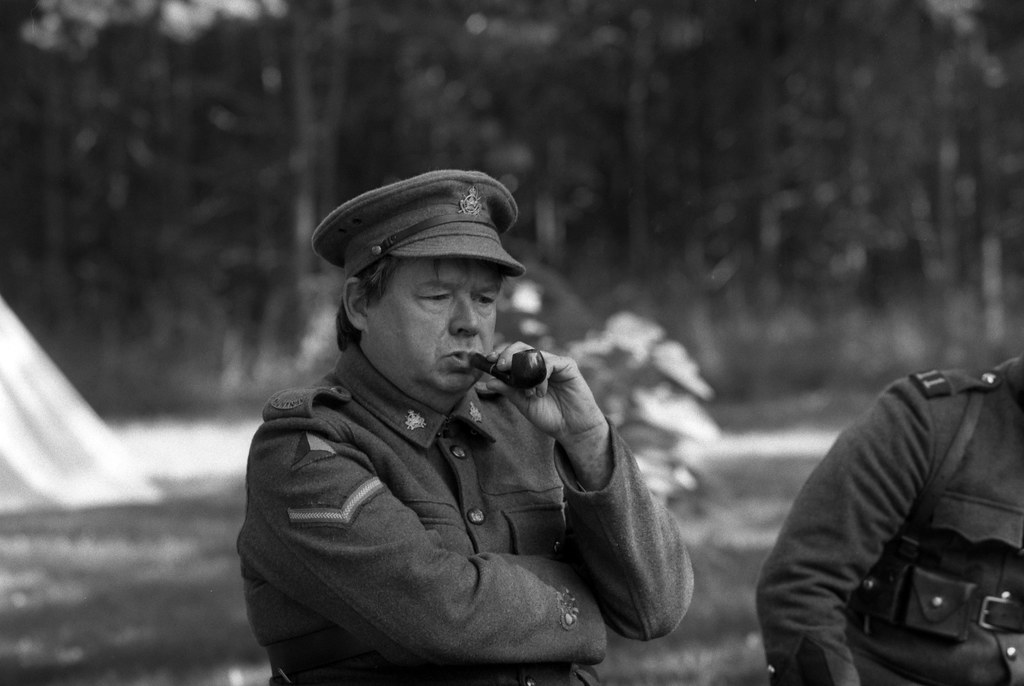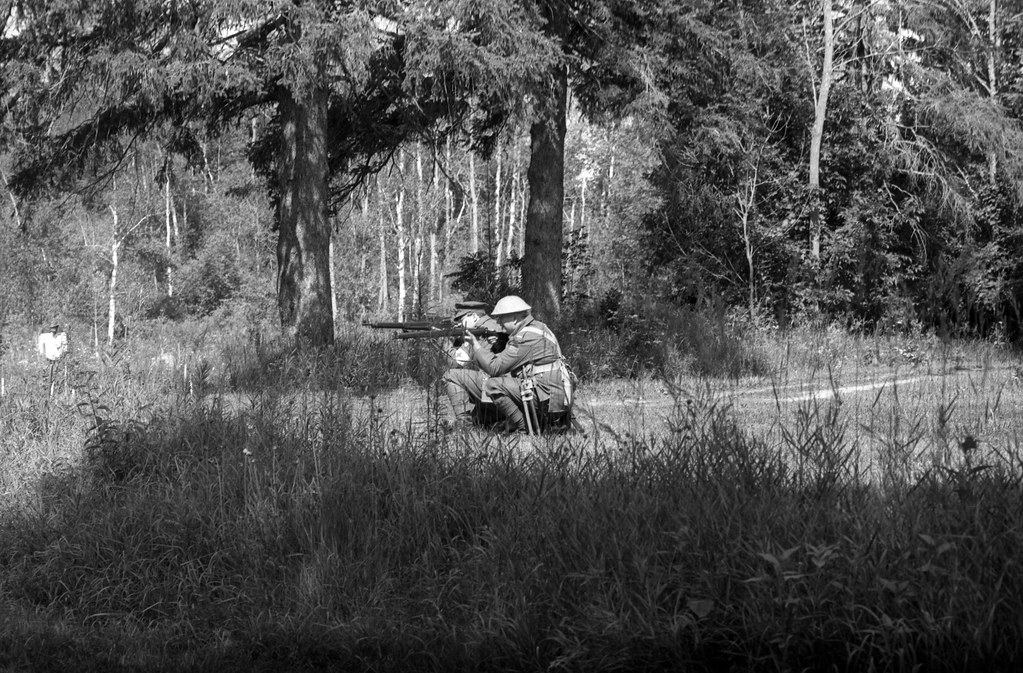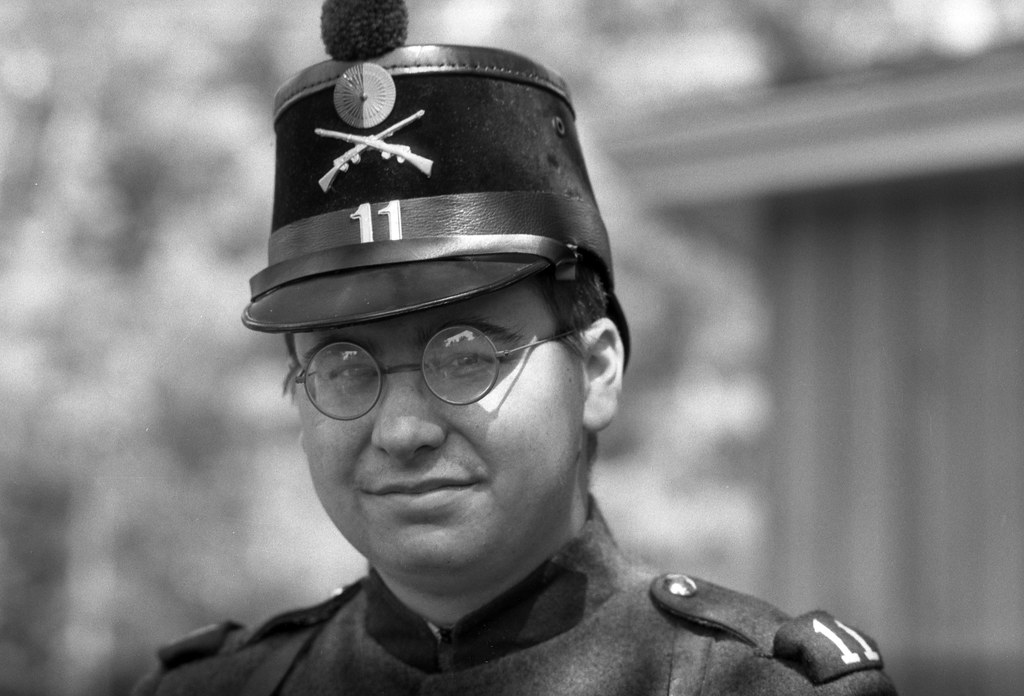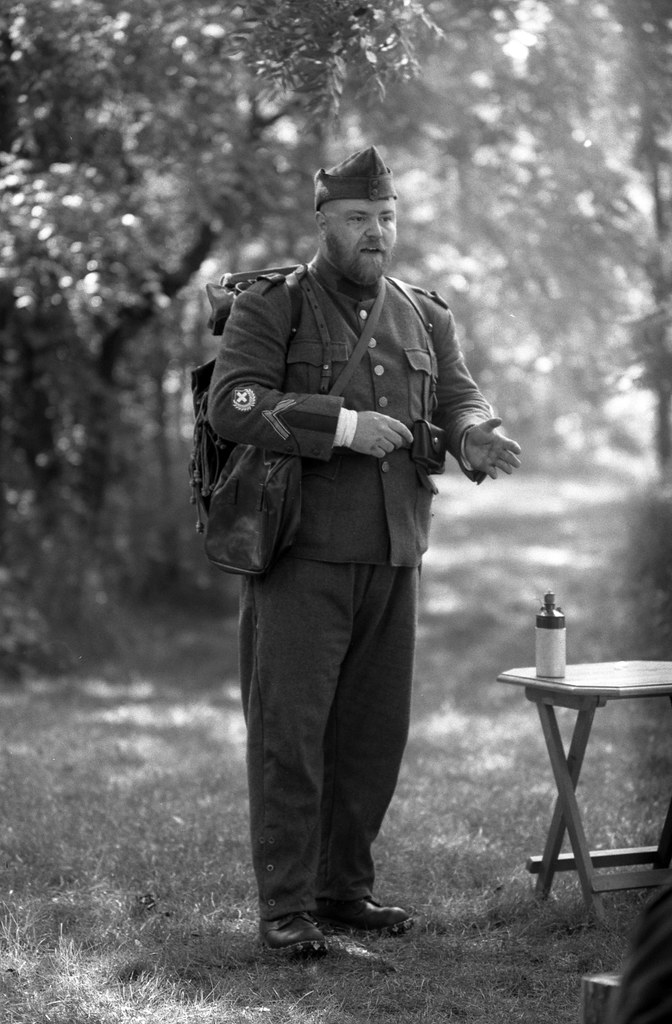It’s been a hot minute since I had a chance to hang out with following historical reenactors in any major way. But this week, it’s a little different from my usual War of 1812/Napoleonic event. We’ve skipped ahead one hundred years and into the Great War. I had a chance to head out to The Hex, a small farm in rural Milton, for an event with a World War 1 unit representing a Swiss Regiment that defended the country’s border and helped maintain their neutrality during the conflict.

Nikon FM – AI-S Nikkor 105mm 1:2.5 – Fomapan 100 @ ASA-100 – Ilford Microphen (1+1) 9:00 @ 20C
During my time at school, World War One fell into my Grade 10 history class in a course called “Canada in the XX Century”, but like many high school history courses, not everything can be taught, and the focus remained on Canada. And while Switzerland was mentioned, it was only in passing as a neutral nation. But as someone who loves to learn and hear those stories, being able to sit and listen to what actually happened in Switzerland during World War One was a true privilege. The modern Swiss Army traces itself to 1907, and by 1911 further modernization, standardization, and expansion resulted in an army of 250,000 with an additional 200,000 in supporting roles. While some felt that the Swiss would join the war on the side of Germany, they maintained their neutrality when war was declared in 1914, but it wasn’t passive neutrality but armed neutrality. On 1 August 1914, troops were deployed along the border. Switzerland shared borders with France, Germany, Austria and Italy. The German’s Schlieffen Plan included an option to invade France through Switzerland to outflank French border forts. Mountainous terrain and the well organized Swiss Army saw the Germans invade through a far easier and less organized Belgium. By 7 August, General Ulrich Wille had some 220,000 troops under his command and positioned mainly along the French border at Jura and south in the Unterengadin Valley and Val Müstair. The numbers varied throughout the war based on temperament and threat to Swiss neutrality, and during the war, some 1,000 incursions and fighting did take place in Swiss territory. Mis-Aimed artillery would hit and destroy a Swiss Chalet, and the Austrians who had fired the shells ended up paying for reconstruction. But one of the biggest involvement of the Swiss government during the war was the internment program. Proposed in the first year of the war and implemented a year later, governments would allow wounded prisoners of war who met certain criteria to be interned in Switzerland, where the soldier’s nation would pay for their support. At the same time, they received better treatment and medical treatment that could not be provided in POW camps in England and France. Prisoners received food, shelter and would spend time working and could even attend courses at University. Ultimately some 68,000 prisoners would be interned in Switzerland, many returned home, but some had met and married Swiss citizens and ended up resettling in the country after the war, especially if they had fathered children.

Nikon FM – AI-S Nikkor 105mm 1:2.5 – Fomapan 100 @ ASA-100 – Ilford Microphen (1+1) 9:00 @ 20C
Nikon FM – AI-S Nikkor 105mm 1:2.5 – Fomapan 100 @ ASA-100 – Ilford Microphen (1+1) 9:00 @ 20C
So far, with this project, the inclusion of people has been a single person, my amazing wife, Heather. Mainly because most people consciously or unconsciously are avoiding people these days, and most of the subjects I’ve been picking have been places. But given that this week I’m at a reenactment event, I made a point to focus on people more than things, and while I did get some still life around the camp, I decided to include people only in today’s post. The reason being is that after a year and a half of not seeing many people, especially friends both old and new, I figured it would make for a stronger connection. And also from a historical and contextual standpoint. It’s easy to study histories and wars when names of places, weapons, dates and numbers. But there were always people involved; many survived physically, many did not survive mentally and even more didn’t survive. This is why I focused on the people who portray and make a point to make those portrayals as accurate as possible.

Nikon FM – AI-S Nikkor 105mm 1:2.5 – Fomapan 100 @ ASA-100 – Ilford Microphen (1+1) 9:00 @ 20C
Nikon FM – AI-S Nikkor 105mm 1:2.5 – Fomapan 100 @ ASA-100 – Ilford Microphen (1+1) 9:00 @ 20C
Given that my focus was mainly on people, I wanted to approach things from a ‘street’ frame of mind, so I ditched the idea of bringing multiple lenses and went with only a single lens, the iconic Nikkor 105mm f/2.5. To help myself, I did my best to shoot between f/2.5 and f/8 to help keep that shutter speed at 1/125″ or faster. After last week’s use of Microphen, rather than let another bottle of chemistry sit around forever, I again when with a 1+1 dilution mainly because I enjoy the look that the film at ASA-100 and the developer gives. And it gave off a wonderfully classic look to the film even though 35mm had not yet become a popular format in the still photography realm but did exist in WW1 mainly for motion picture work. Still, there were some cameras in existence that used 35mm.

Nikon FM – AI-S Nikkor 105mm 1:2.5 – Fomapan 100 @ ASA-100 – Ilford Microphen (1+1) 9:00 @ 20C
Nikon FM – AI-S Nikkor 105mm 1:2.5 – Fomapan 100 @ ASA-100 – Ilford Microphen (1+1) 9:00 @ 20C
Next week, we’re back on the road again and headed back to the urban and checking out another historic village and waterfall; we’re going into Smokey Hollow.